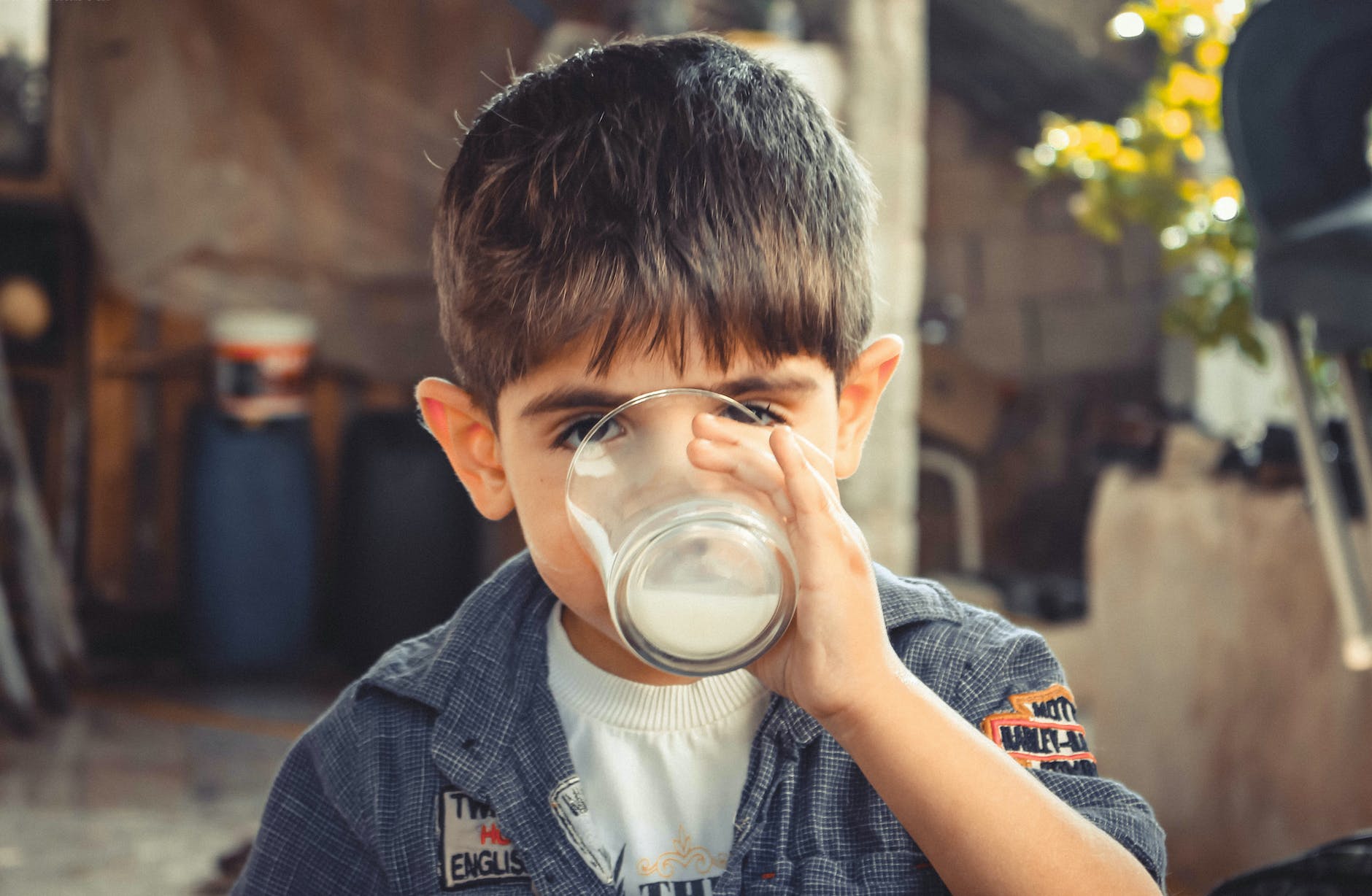If I drink a full glass of cow’s milk, about 30 – 60 minutes later the bloating, gas, and diarrhea begin. I am lactose intolerant.
About 65% of the world’s population is lactose intolerant, so why is it that dairy is such a big part of our culture. This is the milk paradox! Around the world, we produce 700 million tons of milk each year. To understand this number, imagine that every human on earth could consume a 1/4 liter of milk each day. In actuality, milk is used in many dairy products that we consume, and not everyone drinks milk or consumes dairy.
In medical school, I learned about lactose, the di-saccharide sugar found in milk products from mammals, including humans. In order to use this sugar for energy, it must be broken down into simpler sugars called mono-saccharides before it can be absorbed by the gut. Mammalian infants produce an enzyme called lactase that will break down lactose in the gut so that the body can utilize it for energy. As we age, the lactase gene turns off and the production of lactase declines. The result is lactose intolerance.
Since many adult guts can no longer digest lactose, instead bacteria in the gut break down the lactose but also create 8 liters of hydrogen gas for every 1/4 liter of milk. The result is bloating and abdominal pain. The unabsorbed lactose also leads to diarrhea.
However, some cultures have persistence of the lactase gene into adulthood. I was taught that these cultures are the reason for the milk culture in areas like Northern Europe for dairy and cheese production that spread across the world.
In medicine, the story that I would tell people who presented with lactose intolerance, “You no longer produce enough lactase enzyme, and so you can no longer break down the sugar in milk. You should avoid dairy products. It’s genetic.”
Christine Warinner researches this milk paradox and has shown that this story is not 100% accurate! Today’s ability to sequence DNA and study ancient and modern populations reveals another interesting story.
The Story of Milk in Mongolia
The nomadic pastural dairy culture in a large industry in Mongolia and a large part of their economy. They milk more species of livestock than any other country in the world. With 7 different species, each producing a different type of milk, almost 30% of calories of the nation is from dairy.
If you ask a Mongolian about milk intolerance, they don’t understand. That’s not a thing in Mongolia. Everyone drinks milk or consumes milk products.
However, DNA studies show that Mongolians do not have persistence of lactase production. This does not make sense with the story that I learned in medical school. They should have a high incidence of lactose intolerance, but they don’t. Christine Warinner’s research showed that the gut microbiome (the normal and healthy bacteria that live in the gut) was different in the Mongolian population. There are several types of bacteria in the gut microbiome that break down lactose without the production of hydrogen gas. Their dairy culture is supported by their gut microbiome.
You can watch a presentation of the research in the link below.
What are the implications for modern medicine?
Today, there is more and more research into the importance of the gut microbiome in many different diseases, the effect of modern diets and antibiotics, and the ways in which we can re-introduce a healthy gut microbiome to cure some disease states. Perhaps, there will be a cure for lactose intolerance as well. The view that all bacteria are bad and cause infection and disease is incorrect. We exist because of a healthy relationship to the healthy bacteria population that we house in our gut. The story is more complex as different parts of the body (and even different parts of the gut) have a different healthy microbiome. Different populations with very different diets have different native microbiomes. Yes, there are also bad bacteria that cause infection, imbalance, and disease. The research continues… the story evolves… lactose intolerance is not just due to the lactase gene… the theories that make logical sense (even for decades) are not always 100% true…
Resources
- https://www.radcliffe.harvard.edu/event/2024-christina-warinner-fellow-presentation-virtual?
- https://youtu.be/0jhdmTrV5Ms?si=uLRjs2M_Q973KEeu
